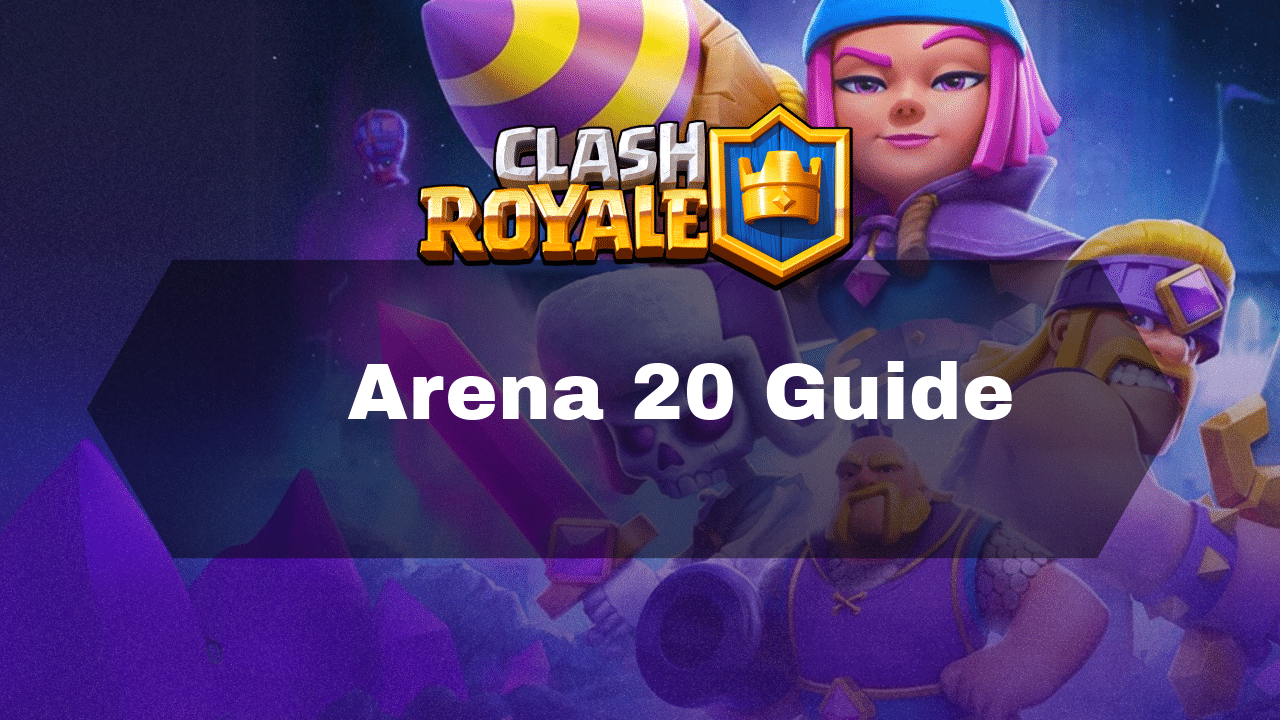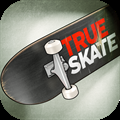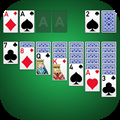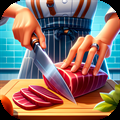
Introduction
Welcome to Boot Camp, also known as Arena 20, a pivotal point in your Clash Royale journey. This arena marks a significant step towards the end-game of the mid-ladder and demands a solid understanding of strategy, deck-building, and gameplay mechanics to stay competitive. To reach Arena 20, you must accumulate 7,500 trophies, meaning the competition here is tough, and success requires more than just luck—it demands skill and preparation.
In this Clash Royale Arena 20 Guide, we’ll walk you through the challenges of this advanced arena, providing insights and strategies to help you not only survive but thrive. We will explore the current meta, analyze some of the most powerful deck combinations, and uncover the advanced tactics that separate good players from the best. Whether you’re looking to improve your decision-making, master elixir management, or understand the nuances of your chosen deck archetypes, this guide is designed to elevate your gameplay and ensure that you consistently earn those hard-fought rewards. With the right knowledge and strategies, you’ll be well-equipped to dominate in Arena 20 and beyond.
Understanding the Meta in Arena 20
In Arena 20, understanding the meta is crucial for success, as it is heavily influenced by the power of evolved cards. These evolved cards, which have enhanced abilities, can significantly change the course of battles, making them a priority for players who want to gain an edge. Overpowered evolutions, such as Bomber Evolution and Knight Evolution, play a major role in this arena.
These evolutions are not just stronger versions of their base cards but come with abilities that can alter the dynamics of the game. For example, a Giant Graveyard deck utilizes Bomber and Archer Evolutions, while the Splashyard deck often relies on Knight and Bomber Evolutions. These powerful evolutions provide a strategic advantage, making it vital for players to include them in their decks.
Card levels are equally important in Arena 20. Many players in this arena have cards at level 14 or 15, and having under-leveled cards can put you at a disadvantage, especially when facing opponents with maxed-out cards. Therefore, upgrading your cards is essential to keep pace with the competition and ensure that your deck remains effective.
While evolved cards are a significant factor in the meta, they are not the only consideration. Regular cards like Fireball and Arrows remain vital tools, and using them effectively can help control the battlefield and provide valuable support to your deck.
The meta also includes a variety of viable deck archetypes, such as beatdown, cycle, and control. Decks like Royal Giant Fisherman Cycle, Giant Graveyard, Goblin Drill Cycle, Miner Poison, and Splashyard are all popular and competitive choices in Arena 20. Players should aim to adapt their deck to these popular archetypes while considering how they can counter the evolving meta.
In summary, Arena 20’s meta revolves around the use of overpowered evolved cards and high-level cards, with a strong emphasis on strategic card use and deck composition. Success in this arena requires not only mastering these elements but also adapting to the ever-changing dynamics of the game.
Recommended Decks for Arena 20
In Arena 20, a variety of decks are viable, and many incorporate powerful evolutions along with high-level cards to maximize their potential. Card levels are critical at this stage, as they can significantly impact your performance, so focusing on upgrading cards is key. Here are some strong deck options that perform well in Arena 20:
The Royal Giant Fisherman Cycle Deck is a strong, fast-paced deck with a low average elixir cost of 3.1. It includes the Royal Giant Evolution, Skeletons Evolution, Little Prince, Arrows, Royal Ghost, Fisherman, Skeleton Dragons, and Rage. This deck takes advantage of the Royal Giant’s tanking ability, paired with quick cycling and Fisherman’s utility to pull enemy troops and activate the King Tower, putting constant pressure on the opponent.
The Giant Graveyard Deck uses the Giant as a tank, supported by the Graveyard spell for constant chip damage. It also incorporates Bomber and Archers evolutions, offering a solid defensive presence while continuously applying offensive pressure with the Graveyard.
The Goblin Drill Cycle Deck is another fast-paced option, relying on the Goblin Drill as its win condition. It also includes Skeletons and Bomber evolutions, focusing on overwhelming the opponent with quick cycles and consistent chip damage from the Goblin Drill. A variation of this deck uses Zap Evolution, Knight Evolution, Mother Witch, Bomb Tower, Little Prince, Ice Spirit, Goblins, and Goblin Drill, with an average elixir cost of 2.6.
The Miner Poison Cycle Deck focuses on using the Miner to chip away at the enemy’s tower, combined with the Poison spell for area denial. With Bats and Bomber evolutions, this deck excels at controlling the battlefield and frustrating opponents through constant chip damage.
The Splashyard Deck utilizes a combination of splash damage troops and the Graveyard spell for a strong offensive push. With Knight and Bomber evolutions, this deck boasts a solid defense and counter-push potential, allowing you to control the battlefield and overwhelm your opponent.
Other viable deck options in Arena 20 include:
PEKKA Zap Bridge Spam: A PEKKA-based deck that excels with high-damage troops and quick offensive plays.
Double Elixir Loon Freeze: A deck that relies on the Lava Hound and Balloon combo for heavy damage during Double Elixir.
Splashyard with Barb Barrel: A variation of the standard Splashyard deck using Barbarian Barrel for additional control.
Sudden Death Pompeyo’s Loon Freeze: Another Lava Hound and Balloon combo deck, designed for late-game pushes.
Hog Dart Musk 3 Spell Cycle: A fast Hog Rider deck that quickly cycles through cards for relentless pressure.
PEKKA eWiz Bridge Spam: Another PEKKA-based deck with the Electro Wizard for versatile control and offense.
Evolution Bonanza Drill Wizard Tesla: A deck built around evolved cards, providing a variety of strategic plays.
RETRO Giant Hog Musk Beatdown: A beatdown-style deck using the Giant and Hog Rider for a powerful combination of offense.
Miner Bowler Rocket Chip v2: A deck that uses the Miner, Bowler, and Rocket for controlled chip damage and defensive strength.
Goblin Outbreak Drill Giant Double Prince Spam: A spam-heavy deck that focuses on overwhelming the opponent with constant troop pressure.
A3 – Giant Witch Beatdown: A beatdown deck based on the Giant and Witch, which provides both tanking and splash damage.
GobGiant Sparky: A deck using the Goblin Giant as a tank and Sparky as the primary damage dealer.
Mighty Miner Mortar Bait: A bait deck that uses Mighty Miner and Mortar to control the battlefield and create pressure.
Many of these decks can be adapted depending on your card levels, personal playstyle, and the challenges you face in Arena 20. Experimenting with different decks can help you find the one that suits you best. Some decks are very similar and may only require slight card adjustments to be effective, so don’t hesitate to make tweaks based on your preferences. Using multiple evolutions in your deck can provide a significant advantage in matches, giving you more versatility and stronger abilities. Ultimately, the key is to select a deck that you can play effectively, while continuing to upgrade your cards to stay competitive in Arena 20.
General Gameplay Strategies
In Arena 20, adapting to the evolving meta is crucial for success. The power of evolved cards, particularly Bomber and Knight Evolutions, can significantly impact the course of a match. It’s important to either incorporate these evolved cards into your deck or learn how to effectively counter them. Additionally, cards that have evolutions available should be prioritized, as their enhanced abilities can provide a considerable advantage. However, if you do not have access to evolutions, focusing on strong meta decks that don’t rely on them is a viable alternative.
Card level is another key factor in Arena 20. Prioritize upgrading your core cards, as even the best decks will struggle if your cards are under-leveled. A deck with maxed-out cards can often outperform a meta deck with lower-level cards, so continuous upgrading should be part of your strategy.
Mastering the fundamentals is essential for success. Elixir management plays a huge role, as leaking elixir can give your opponent an advantage. Always ensure that you’re using your elixir efficiently, striving for positive elixir trades, and avoiding unnecessary downtime. Building placement is another vital skill—strategic positioning of your buildings, especially in the center of the arena, can help distract and counter enemy troops while maximizing tower damage. Spell usage should be carefully timed to hit both enemy troops and towers for maximum value.
When building your deck, make sure it has a solid win condition, support cards, a building, a big spell, and a small spell to provide balance and versatility. Recognizing when to defend and when to attack is also crucial; proper timing can give you the upper hand in key moments. Additionally, mastering card cycling and understanding your opponent’s card cycle will help you anticipate their moves and respond more effectively.
Strategic offense in Arena 20 revolves around using your win conditions effectively. Cards like the Hog Rider, Giant, Goblin Drill, and Miner are essential for consistent tower damage. If you’re using a beatdown deck, make sure you have enough elixir to support your tank and launch a powerful push. Applying pressure is key—use cheap cards at the bridge to force your opponent to spend elixir and create openings. Prediction plays can also be a game-changer.
By anticipating your opponent’s moves, such as card placements, spell usage, and defensive positioning, you can outplay them and gain the upper hand. Counter-pushing is another powerful tactic: after a successful defense, transition into an immediate counter-push, using your elixir advantage to put your opponent on the back foot.
On the defensive side, positioning is everything. Centralizing your defenses allows both of your towers to target enemy troops, giving you more coverage. Kiting, or pulling enemy troops across the arena with a tanky unit like the Ice Golem, can help minimize damage to your towers. Identifying your opponent’s key counters and adjusting your strategy accordingly is also essential. Avoid over-committing on defense, as it can leave you vulnerable to counter-pushes. In certain situations, it’s better to accept tower damage rather than overcommit on defense, especially if you can trade tower damage efficiently.
Advanced tactics take your gameplay to the next level. Elixir counting—tracking your opponent’s elixir usage—lets you time your attacks for when they are low on resources, giving you an advantage. Recognizing weaknesses in your opponent’s deck will help you exploit bad matchups, and adjusting your card cycle when your win condition is consistently countered can turn the tide in your favor.
Unit stacking is another advanced strategy—by positioning multiple ranged units, such as Archers or Firecracker, in the same spot, you can maximize damage output while countering swarm units effectively. Adapting to your opponent’s playstyle is important too; if one strategy isn’t working, don’t hesitate to try a different approach. Using cheap troops allows you to cycle to your win condition quickly while maintaining solid defense. Finally, avoiding tilting is critical to maintaining focus and avoiding mistakes, especially during a losing streak.
Deck variety is essential in Arena 20. As you climb higher up the ladder, be open to experimenting with new archetypes and decks. Choose a deck that suits your playstyle and has cards at an appropriate level for competitive play. Meta decks like Royal Giant, Giant Graveyard, Goblin Drill, Miner Poison, and Splashyard have proven to be effective, but don’t be afraid to tweak them to match your preferences. Small changes in your deck composition can make a big difference in performance.
Finally, taking part in the Path of Legends is a great way to level up your cards and earn rewards. The rewards reset each season, so be sure to grind the Path for valuable resources to help you progress further in the game.
By mastering these strategies and techniques, you’ll be well-equipped to succeed in Arena 20 and beyond, steadily improving your gameplay and increasing your chances of victory.
Advanced Tactics
In Arena 20, mastering advanced tactics is essential for securing victories against tough opponents. One of the most important skills is elixir counting. This involves tracking how much elixir your opponent spends during each turn and anticipating their next move based on their remaining elixir. For example, if an opponent plays a high-cost card like the Giant, they will have less elixir to defend a counter-push. Understanding this can help you pressure your opponent when they are low on elixir, creating opportunities for significant damage.
Another key tactic is card cycling. Advanced players are highly aware of the order in which their cards return to their hand. By understanding this mechanic, you can plan your strategy several moves ahead. If you know you’re only two cards away from a defensive building, you can cycle through your deck and prepare for a counter before your opponent attacks. Additionally, observing your opponent’s card cycle will give you insight into what cards they may or may not have available, allowing you to play more strategically.
Prediction plays are a powerful tactic in Arena 20. This involves anticipating your opponent’s actions based on their past plays and the current game situation. For instance, if you’ve noticed your opponent frequently uses a certain spell to deal with your troops, you can predict when and where they’ll play it, allowing you to place your units in a way that minimizes the spell’s impact. Accurate predictions can dramatically shift the momentum of a match, so it’s important to think ahead and consider all possible counterplays your opponent might have.
Top players also excel at recognizing weaknesses in their own decks and their opponent’s strategies. When you face a bad matchup, it’s crucial to learn how to adapt and overcome it. This requires continuous practice and an understanding of how to exploit your opponent’s vulnerabilities, making every encounter a learning experience. Recognizing these weaknesses can give you the upper hand when facing tough opponents.
Unit stacking is another advanced technique. By placing multiple ranged units such as Archers or Firecracker in the same area, you can apply consistent damage, effectively counter swarm units, and force your opponent to react. However, it’s important to anticipate how your opponent may counter these stacked units. A well-timed spell or troop placement from them could neutralize your stack, so always consider their possible responses before committing.
Pressure points are critical when it comes to creating opportunities for damage. Applying pressure forces your opponent to react, often leading them to over-commit or take damage. By playing cheap cards at the bridge, you can force your opponent into difficult decisions, whether that’s spending more elixir than they want to or allowing damage to accumulate on their tower. Understanding your opponent’s cycle is key to this strategy, as it allows you to pressure them when they have few good responses left.
If your opponent has a solid counter to your win condition, it’s time to adjust your cycle. This can involve cycling cheaper cards to reach your win condition more quickly or focusing on defense to cycle back to it. By changing up your cycle, you catch your opponent off guard and keep them from consistently countering your strategy.
Finally, tower trading is a strategy to use when you’re faced with a difficult push from your opponent. Instead of over-committing on defense and potentially wasting elixir, you can trade damage by allowing your opponent to deal some tower damage while you focus on dealing damage to their tower in return. Sometimes, accepting a bit of tower damage is the best way to maintain pressure and initiative in the match.
By consistently applying these advanced tactics, you’ll be able to navigate the challenges of Arena 20 and elevate your gameplay to a higher level. These strategies will give you the tools to outplay opponents and increase your chances of success in this competitive arena.
Specific Card and Deck Tip
In Arena 20, understanding how to utilize specific cards and their synergies is crucial for success. For example, the Royal Giant is a strong tank that can be paired with support units like the Royal Ghost and Skeletons in a Royal Giant Fisherman cycle deck. It also works well in beatdown decks, where you can support it with ranged units that target both ground and air.
Be cautious of the Pekka, as it is a solid counter to the Royal Giant. The Giant, used as a tank in beatdown decks, is effective when paired with support troops such as the Musketeer, Bomber, or Wizard. A Giant Graveyard deck can also be potent, particularly with the Bomber Evolution and Archers Evolution, while adding the Night Witch or Bowler can enhance this deck’s effectiveness.
The Hog Rider is a versatile win condition thanks to its speed and ability to consistently deal damage to towers. It is especially powerful in a Hog Rider cycle deck, where it is combined with cheap cards like Ice Spirit, Skeletons, or Goblins to cycle quickly and apply constant pressure.
Additionally, pairing the Hog Rider with Firecracker and using supporting spells like Fireball or Earthquake can create a powerful offensive push. However, buildings such as the Cannon can effectively counter the Hog Rider, so be sure to use them wisely. The Pekka is a tanky unit often used to punish over-extensions from opponents. It pairs well with support units like Electro Wizard or Dark Prince. A Pekka bridge spam deck, combined with spells like Zap or Rage, can overwhelm opponents. An evolved Pekka is especially tough to counter, as it is immune to pushback.
The Miner is a versatile card that excels in cycle decks. It can be paired with the Poison spell to chip away at towers and target enemy support troops. The Miner works well with cards like Bats, Bomber Evolution, and Guards. A Miner Bowler Rocket deck is another effective option, as it focuses on chip damage with a more defensive playstyle. The Goblin Drill, a strong win condition, is best used in a Goblin Drill cycle deck, particularly when combined with Skeletons and Bomber Evolution. It can also be paired with a Giant in a Goblin Outbreak Drill Giant Double Prince spam deck to overwhelm opponents.
The Graveyard is an excellent win condition for control decks. It is most effective when paired with tanks and support cards that can help deal with the skeletons it spawns. Spells like Poison or Tornado can also assist in supporting the Graveyard push. A Giant Graveyard deck, combined with Bomber and Archers Evolution, can be a powerful offensive strategy.
Be mindful of counters like the Archer Queen, which can clear the Graveyard’s skeletons. Firecracker is another strong card, especially when paired with the Hog Rider for an offensive push. Stacking Firecrackers can also be an effective tactic, but you’ll need to protect them from splash damage and be prepared for prediction plays from your opponent. Additionally, Firecracker excels at taking down swarm units and dealing chip damage to towers.
The Mortar is primarily a defensive card but can be used to bait spells or cycle in decks. Placing it behind a tank allows it to provide supporting damage while being protected from melee units. Mortar decks often pair well with cards like Princess, Goblin Gang, or Skeleton Barrel to bait out enemy spells. Supporting spells like Rocket, Poison, or Fireball are also important for defending or assisting the Mortar. The Bomber Evolution is an excellent card for countering swarm units and providing support during pushes. Including it in your deck gives you a strong tool against opponents that rely on mass troops.
The Knight Evolution is a versatile card that acts as both a tank and a reliable damage dealer. While its pushback resistance is removed, its shield makes it valuable in many decks. It works well with ranged units like Firecracker to create strong pushes. The Log and Arrows are essential spells for countering swarm units and providing chip damage. They can clear out troops effectively, though they struggle against high-health units like Pekka. If you have access to the evolved version of Zap, it can be a useful addition for more efficient spell usage.
Other valuable cards for Arena 20 include the Musketeer, which has become even stronger after the Electro Wizard nerf. The Goblin Cage is a reliable defensive card that can help with pressure and is more effective when evolved. The Electro Spirit is a strong tool for resetting enemy units’ attacks and pairs well with Fireball. The Dark Prince is a solid all-around card, useful for both offense and defense, and should be considered in Pekka decks.
Ice Spirit is a low-cost unit that can be used to control enemy troops and cycle quickly. Goblin Gang is great for defending against ground units and can bait out spells. Finally, the Inferno Tower is an effective defensive card against heavy tanks, though it is vulnerable to counters like Electro Dragon and Zap.
By applying these card-specific tips and deck recommendations, you can build strong, effective strategies tailored to Arena 20’s challenges and improve your chances of success.
Conclusion
In Arena 20, finding success relies heavily on experimenting with different deck types and playstyles. Decks built around cycle, beatdown, and control archetypes are commonly seen, with specific win conditions like the Hog Rider, Giant, Pekka, Miner, Goblin Drill, and Graveyard proving to be effective. It’s essential to test and refine different decks to discover one that complements your playstyle and strategy. Card evolutions are also a key aspect of success in this arena, as evolved cards like Bomber, Archers, Knight, and Electro Spirit offer powerful advantages and can shift the momentum of the game. Be mindful of which cards are evolvable and consider integrating them into your deck for optimal performance.
Adaptability is crucial when facing diverse opponents. If your usual win condition is consistently countered, be prepared to adjust your tactics. Switching up your card cycle or switching focus from offense to defense can often lead to better results. Repeatedly relying on the same strategy that’s being countered will likely lead to defeat. Efficient elixir management plays a central role in your success. Aim to avoid leaking elixir and focus on positive elixir trades that put you in a stronger position. Keeping track of your opponent’s elixir count also opens up opportunities for dealing substantial damage.
Strategic card placement is vital for both defense and offense. Defensive buildings like the Cannon can be used to pull enemy units and buy you time, while placing ranged units provides support during your pushes. Unit stacking, especially with ranged units like Firecracker, can create overwhelming pressure on your opponent. Spells, such as Fireball, Arrows, Zap, Log, and Earthquake, are also key tools for clearing the way for your win conditions or making positive trades. The Tornado spell is particularly effective for activating the king tower or pulling enemy units into a better position for defense.
Knowing when to switch between defense and offense is another important aspect of gameplay. If you have an elixir advantage, it’s often the best time to apply pressure and go on the offensive. Trading tower damage is a strategic option when it allows you to set up for a more advantageous push. Finally, reaching and succeeding in Arena 20 takes time and patience. Don’t be discouraged by losses—use them as learning experiences, and make sure to take breaks if frustration builds up. Continuous practice and experimenting with different strategies will gradually improve your gameplay and help you climb the ranks.
By applying these principles—deck variety, adaptability, elixir management, strategic card placement, and effective use of spells—you’ll be well-equipped to handle the challenges of Arena 20 and beyond. Each player has their own playstyle, so take the time to find what works best for you, and continue refining your approach.













